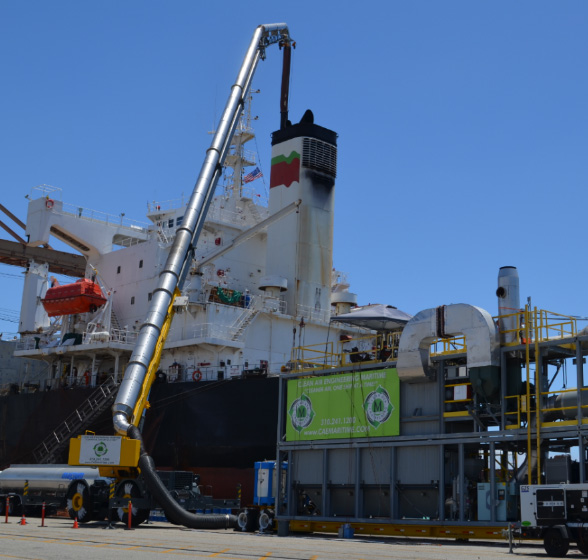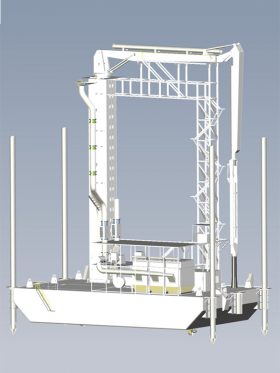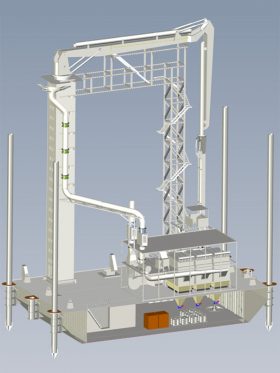Capture & Control Technology Development for Ocean Going Vessel Emissions
In January of 2014 the California Air Resources Board (CARB) began enforcement of the “At-Berth Regulation” with the intent of reducing toxic emissions from ocean going vessels while at berth (tied up to a dock) in California ports. The primary emissions from these vessels are diesel particulate matter (PM) and oxides of nitrogen (NOx) produced from the auxiliary engines that generate electrical power for on board operations. The rule allows compliance by two different options as listed below.
- Shut down the auxiliary engine(s) and plug the vessel into shore power.
- Capture the exhaust from the auxiliary engines and remove the PM and NOx.
According to CARB there has been an 80% reduction since 2014 in harmful emissions from more than 13,000 vessel calls since approval of the regulation.
Synergy
In 2009 Clean Air Engineering Maritime (CAEM) was formed by Nick Tonsich who was the President of the Los Angeles Board of Harbor Commissioners from 2001 to 2005. CAEM was formed to develop and implement the first capture and control system capable of providing compliance with the CARB At-Berth regulation through Compliance Option 2 listed above. CAEM partnered with Rod Gravley, President of Precision Partners, to develop a high-performance, multi-pollutant, diesel exhaust treatment system that could operate on a commercial basis.
The initial technology development and system design required several steps as listed below and incorporated catalytic ceramic filters which had already been proven in other industries for more than 5 years.
- Initial technology evaluation was conducted at the University of Riverside CE-CERT.
- CFD modeling of various capture hood designs
- Functional testing of capture hood designs
- Land based pilot testing of both the capture and treatment system
The pilot testing initially verified the performance of the technology on the exhaust of an auxiliary engine operating in a vessel while At-Berth. The knowledge gained through the pilot testing was incorporated into the first Marine Exhaust Treatment System (METS) which was named METS-1B and is a one of a kind portable barge-based system. METS-1B has successfully operated for more than 21,000 hours and completed more than 350 vessel calls without a safety incident. METS-1B is the first and only alternative control technology approved for compliance with the CARB At-Berth Regulation in California.
All METS can reduce PM by +99 %, NOx by +95 %, SOx (oxides of sulfur) by +90%, and ROG (reactive organic gases) by +90% with ammonia slip of <5.0 ppmv. The dry ceramic filter technology has proven to be robust and efficient at controlling diesel exhaust.

METS-1B

METS-2S
The relationship between CAEM and Precision Partners continued and produced METS-2S which is the second system deployed into the fleet and is a purpose-built shore-based capture and control system.
The latest system currently in development is METS-3B (see below), a redesigned barge-based system currently in construction and expected to enter the CAEM METS capture and control fleet in 2022.


The relationship between CAEM and Precision Partners continues today with Precision Partners leading the effort to design the third-generation systems and to commercialize those systems into the expanded CARB At-Berth regulation, also to customers in the rest of the US, Europe, Asia, and the Middle East.
As a result of the successful development of the METS, Precision Partners is continuing to work with CAEM to commercialize the ceramic filter technology application on-board vessels permanently with a Vessel Exhaust Treatment (VET) system.

